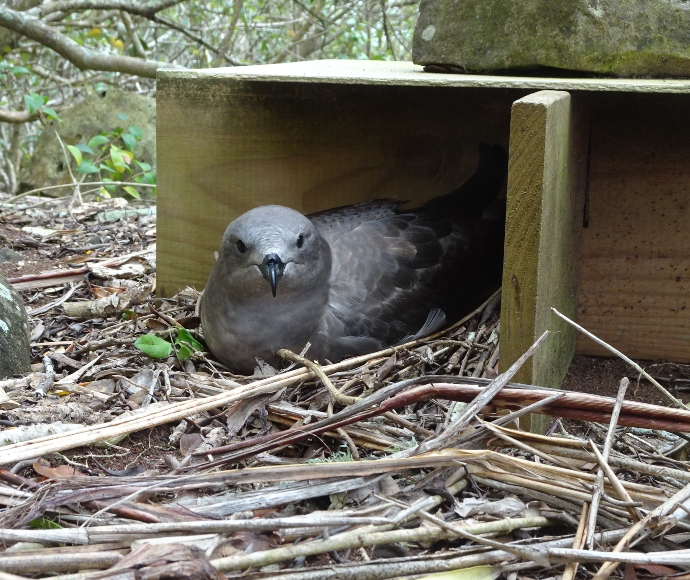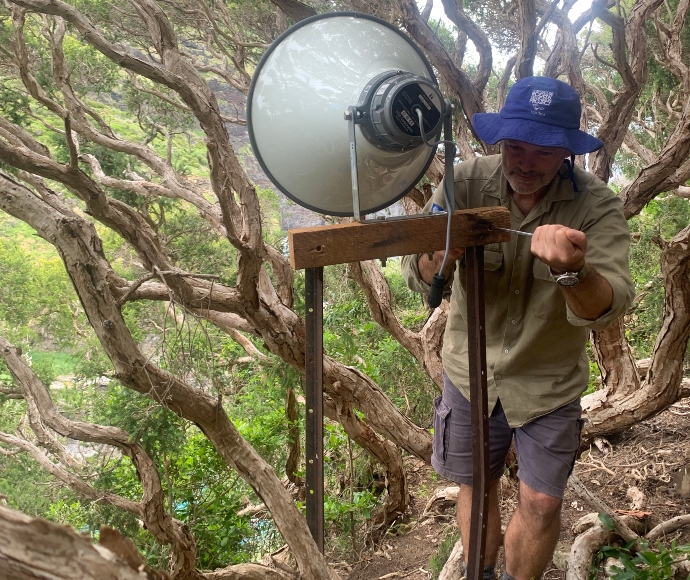Peering into the past to bring vulnerable seabirds home
The secret to bringing one of the state’s most cryptic and restricted seabirds, the Kermadec petrel, back to its original home may be some good, old-fashioned historical sleuthing.

Department of Planning and Environment senior scientist Nicholas Carlile has received a grant of nearly $200,000 from the NSW Government's Environmental Trust to go towards the effort of returning the vulnerable Kermadec petrel to World Heritage-listed Lord Howe Island.
The petrels’ predicament
Currently in New South Wales, Kermadec petrels are only found 300 metres above sea level on the extremely steep cliffs of Balls Pyramid, 23 kilometres south of Lord Howe Island. There is also a small colony of the birds on Phillip Island, near Norfolk Island.
It hasn’t always been like this. The birds were widespread across Lord Howe until 2 centuries ago, but they progressively disappeared completely from the island following the introduction of pigs, rodents and invasive weeds.
Kermadec petrels are particularly vulnerable to mammal predators: they evolved and survived on islands that people didn’t reach until the modern era, and they nest at the ground’s surface rather than in a more protected burrow.
Pigs are now removed and rodents are likely no longer persisting on Lord Howe Island. A massive ongoing weed control program is also underway.
Carlile and his colleagues believe the time is now right to attempt to attract the birds back to the island. But so little is known about them, says Carlile, that no one knows where they once frequented and nested on the island.
‘We do not know what makes good Kermadec petrel habitat,’ he says.
Old diaries reveal vital clues
This is where an egg collector called Roy Bell enters the story. He was on Lord Howe in 1913–14 and collected eggs and skins of birds from across the island.
‘He kept a very good diary and is the only person known to have found a Kermadec petrel on Lord Howe Island,’ says Carlile.
Bell’s diary was purchased by the National Library in the 1970s and Carlile and his team are now scouring it for clues to identify exactly where the seabirds were once found.
‘Those early 20th century diaries are the only records of what undisturbed Kermadec petrel habitat looks like.’
Let’s get loud
Once the best habitat on Lord Howe Island has been identified, Carlile and his colleagues will set up loudspeakers playing recordings of Kermadec petrel calls that will hopefully attract any individuals foraging in the ocean around Lord Howe Island.
The team knows that Kermadec petrels from Phillip Island forage in the waters around Lord Howe based on logger tracking data. These travellers will be the birds that the scientists hope to trick into landing and settling on Lord Howe.
Using Bell’s journals as a possible lead, researchers will start looking for good petrel habitat, where the loudspeakers will be placed.
‘They’re so vulnerable as a species,’ says Carlile. ‘If we can get them to breed on Lord Howe it will be an extra population to provide insurance for the species and also it will be good for tourism, as many bird lovers will travel to the island to see them.’
